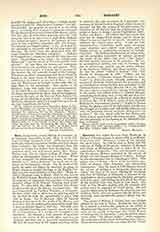

Gosselin, .JEAN-EDME-AUGUSTE, ecclesiastical author; b. at Rouen, France, September 28, 1787; d. at Paris, November 27, 1858. He studied philosophy and theology at St-Sulpice, Paris, 1806-11; became professor of dogma, while yet a subdeacon, after the expulsion of the Sulpicians from the seminary by Napoleon, 1811; was ordained priest, 1812. On the return of the Sulpicians (1814) he entered their society; was vice-president of the seminary at Issy, 1814-30; professor of theology to the candidates for the society, 1814-18; superior of the seminary from 1831 to 1844, when the feeble state of his health, which had always been delicate, obliged him to resign. His increasing infirmities from that time till his death permitted him to render little service except by his pen and the example of his piety, industry, and fortitude. A charming portrait of M. Gosselin has been left by Ernest Renan; in his “Lettres du Seminaire” we see the impression produced on the young man by his kindness, gentleness, sober piety, and prudence, his vast and varied erudition. And in the work of his old age, “Souvenirs d’enfance et de jeunesse”, Renan says: “He was the most polished and amiable man whom I have ever known.”
Besides many minor writings of service in their day, Gosselin left three works which are still of great value. The first is the standard edition of Fenelon in twenty-two volumes (1820-24), to which he added his correspondence in eleven volumes (1827-29), besides a corrected and enlarged edition of Bausset’s “Histoire de Fenelon” and other smaller works devoted to the Archbishop of Cambrai. Gosselins edition is valuable for its notes and discussions, but its accuracy has been somewhat marred by his partiality for Fenelon. Out of it grew his best-known work, “Pouvoir du Pape au moyen age” (1839; 2nd edition, 1845; tr. as “The Power of the Popes during the Middle Ages“, Baltimore, 1853). This remains the classic study of its subject, though in part superseded by Msgr. Duchesne’s researches. It proved beyond question that the popes exercised temporal power over sovereigns during the Middle Ages. Orestes Brownson, in several articles devoted to it, while admitting its great erudition, attacked its position (adopted from Feneion), that this power was derived not from Divine authority, but from the public law of that period. Gosselin lived to complete his valuable “Vie de M. Emery” which was revised and published (1861) after his death.
JOHN F. FENLON

